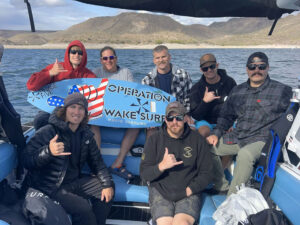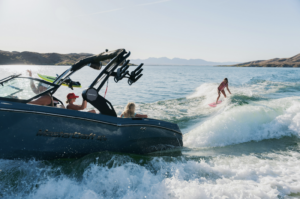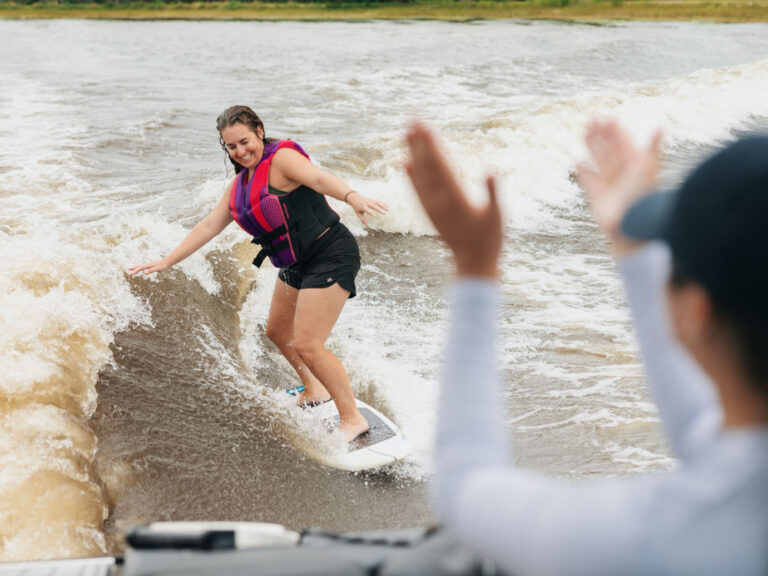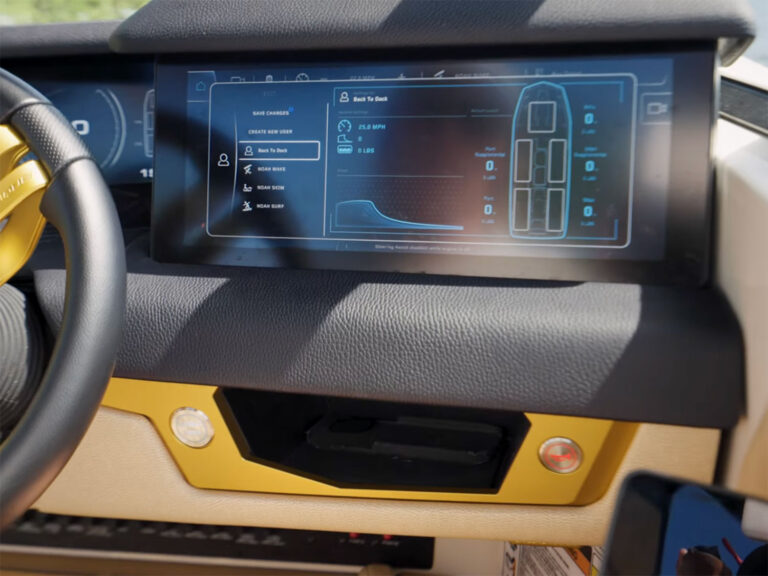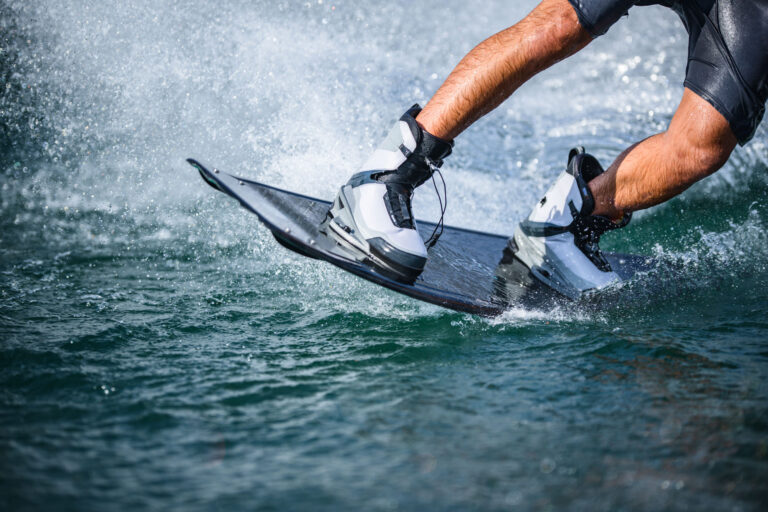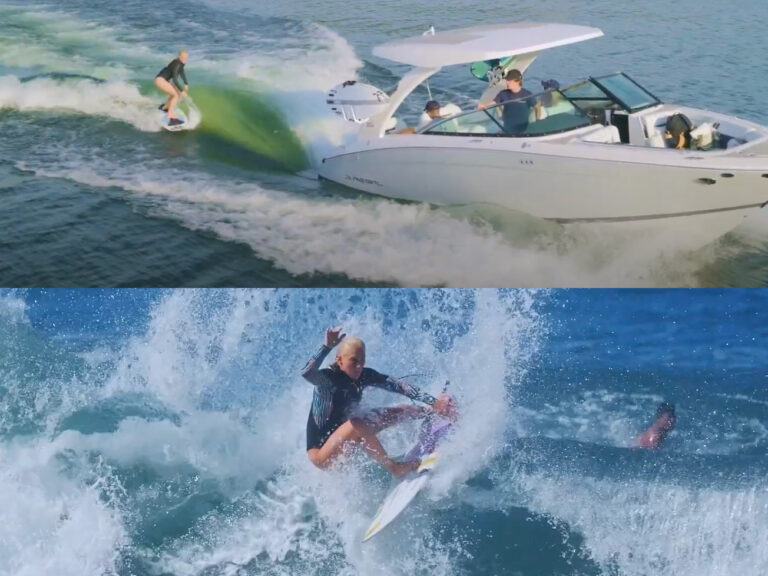Buying a new wakeboat is no easy task. There are more options, sizes and varieties of boats today than ever before. All you want to do is ride, but there are a lot of considerations to make along the way. Let this article act as a guideline before you ink the deal.
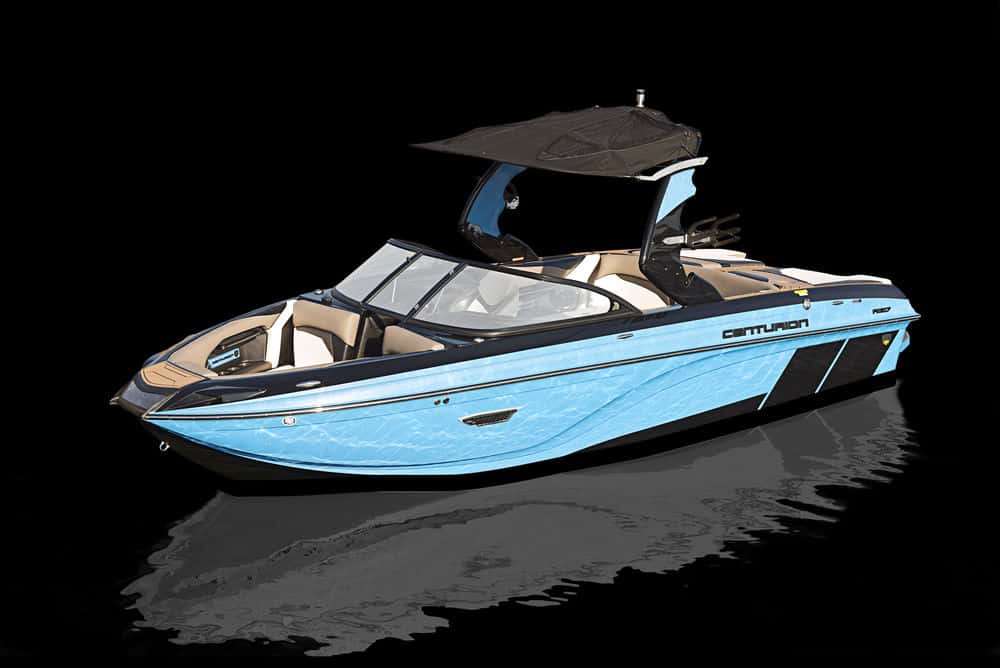
Whether it’s the Centurion Ri217 (ABOVE), Tigé Z3 (BELOW) or something else, there is a new boat out there for you.

Technology
As an expert wakeboarder, you know what you need from a boat’s wake. Today, wakeboard boats offer myriad technologies that boats of even just a few years ago lacked. These ensure you ride the wake that’s optimized for you.
But, as experienced as you may be in the sport, it can be challenging to determine what technologies you need installed aboard your new boat. Depending upon the make and model, some of these systems get listed as options, and some come as standard equipment, so it behooves the savvy buyer to have a handle on just what is needed to deliver the desired wake experience. Hopefully this article, along with other boat reviews we’ve done here, as well as the Boat Buyers Guide App, go a long way toward providing you with the foundation you need to confidently interact with sellers at dealerships and boat shows.
An easy way to find out exactly what can be done with all the technological features in boats these days lies in asking your fellow enthusiasts. Seek out riders with new boats and ask them which features they can’t live without — and also which ones prove less useful. Ask for a ride too. Most wakeboarders — and boaters in general — take great pride in their new boats and will almost always prove generous with their time while showing you their “baby.” If you wrangle a trial like this, take advantage of every minute, both in the wake and at the helm. Think of it as test-driving a car — you want to make sure it suits you and all your needs.
Of course, dealer or factory demo days make it easy to suss out the viability of various systems. From the helm, you’ll be able to determine not only the name of these wake-shaping features, but also if controlling them and creating profiles proves easy while running the boat. Look for controls that don’t require you to turn or tilt your head much. If you can operate systems by simply dropping your eyes, you’ll find it easier and safer to run the boat.
Most every wakeboard boat will also possess software-driven systems control. Many of these are the same backbone system, just wearing a different logo depending upon the boat aboard which it’s installed. But proprietary systems do exist, and you should compare the systems aboard different boats to see which ones you find easiest to use. Just like iOS and Android have their devotees, so do wake-control software users. What proves intuitive to one may confuse another. At the very least, sit at the helm of a boat at a dealer or at a show and walk through an actual day on the water, entering a variety of profiles and settings just as you would while out on the lake.
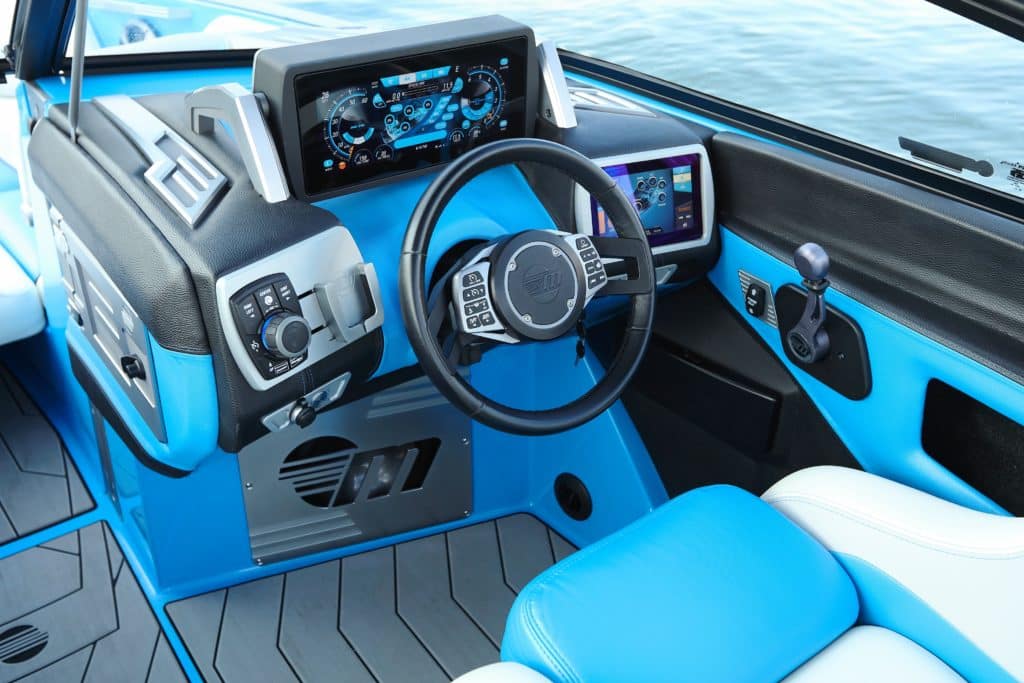
Engines
Wakeboarding, like high-performance, go-fast boating and offshore fishing, requires a lot of fuel be burned in order to participate. The weight (in the form of ballast and large crew), the drag (in the form of wake-shaping devices) and the speeds (in the form of inefficient preplaning attitudes) that create the wakes you love to ride cost fuel to create. So, you’re just gonna have to swallow that fact as part of the price of having so much fun.
That said, many new engines prove more efficient than watersports engines that were produced just a few years ago. The coming of smaller-block engines utilizing superchargers for grunt-enhancing lower-rpm performance and to turbocharge for midrange- and high-rpm power optimization means that appreciable gains in fuel economy can be realized with the purchase of a new boat (or repowering your old one).
And it’s not just about economy when it comes to new watersports boat engines. New fuel-system features make these engines safer and less susceptible to breakdowns from vapor lock, as compared to older engines. Corrosion protection is now enhanced as well.
So, what should you look for when choosing power for a new watersports boat? One complaint you’ll rarely hear among boaters is “my engine is too powerful.” And resale and trade-in value down the road is often enhanced for a boat model equipped with the highest-rated power. Of course, if you really know your sport, your boating habits, and how many crew you can consistently count on to be aboard, you may well choose to pick a smaller engine — which will generally burn less fuel and add less to the price of the boat — that will deliver the performance level that is acceptable to you. There is no guideline here other than your own experience. If you are new to the sport, you need to find someone you can trust to guide you — or default to buying a bigger engine. A little more fuel burned is a far lesser evil than an underperforming boat.
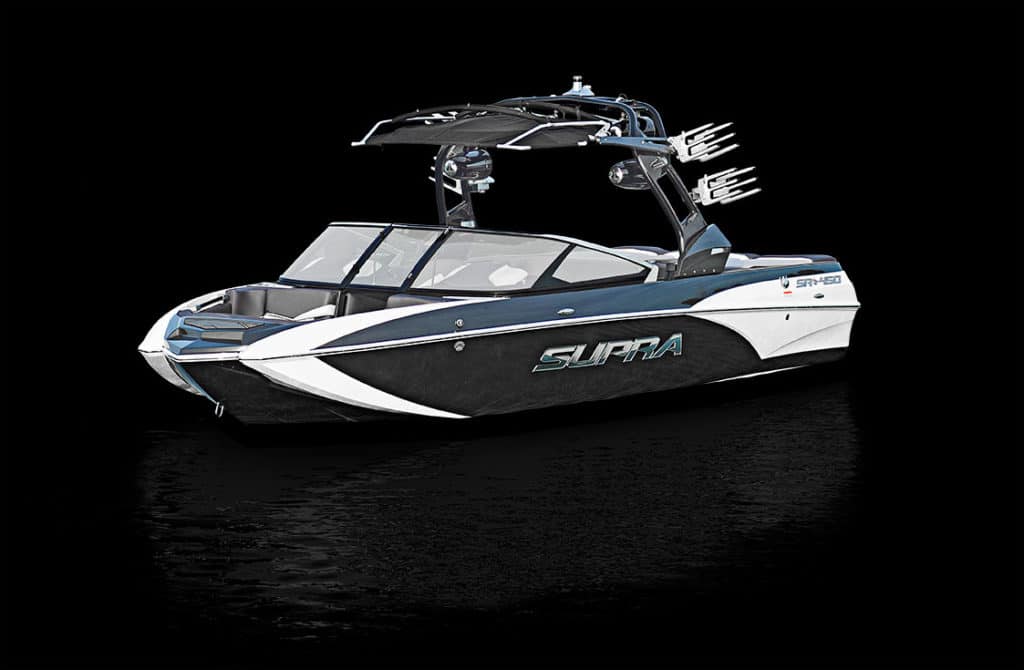
Nuts and Bolts
Examining a boat to assess its structural and design elements takes a lot of experience. In fact, many boat buyers hire the services of a marine surveyor when buying a boat. While surveyors are best known for assessing the value and condition of used boats, surveying new boats is just as much an important part of their business. Fees for a prepurchase survey can range from several hundred dollars to over $1,000 depending upon the situation. But with many watersports boats costing six figures, this is a small amount relative to the total purchase to help ensure satisfaction. Find surveyors from national associations like the Society of Accredited Marine Surveyors (marinesurvey.org) or the National Association of Marine Surveyors (namsglobal.org).
Surveyors are trained to assess all aspects of boat construction and rigging. They work largely using the guidelines and standards of the American Boat and Yacht Council as well as other organizations such as the National Fire Prevention Association, Underwriters Laboratories and, of course, those of the United States Coast Guard.
All these standards are boiled down into industry minimum standards as set forth by the National Marine Manufacturers Association. A boat bearing the NMMA Certified label goes a long way toward helping a watersports boat buyer feel more confident about a pending purchase.
As for an individual, there are numerous areas to assess when comparing one boat versus another. We can’t list them all, but a big one is service access. For instance, your engine and transmission will need the filters and oil changed. Are these points accessible? What about the underwater through-hull intakes for the ballast tanks? Can the valves be reached and shut off quickly should a line burst? Is the electrical system orderly enough that one can find a fuse or trace a wire, or does it resemble a bowl of plastic-coated spaghetti? Is all wiring marine cable? That means it’s more corrosion- and fire-resistant, and its insulation more oil- and solvent-resistant than automotive wire. How about audio systems? Are the speakers facing each other directly, which cancels out some of their sonic goodness? Or are they slightly angled so as to deliver the best sound? How is the tower mounted, and what do its welds look like? Do the board racks swivel?
Then there are soft goods. What kind of staples are used to upholster the interior side panels: Monel (best), stainless (good) or plain steel (bad)? Are there vents in seat bottoms or mesh panels in cushion sides to allow foam to dry out? Does the builder use a special foam that doesn’t hold moisture, such as Dri-Fast, or is less-expensive material used? Do you want your crew to be met with a squish when they sit down? Do you want mildew that can’t be cleaned off because it’s seeping through the vinyl from within? How about coverings on the platform or cockpit sole — are they UV-resistant and replaceable down the road like the SeaDek brand, for instance? Or will the sun and time make them a mess?
Railing, tow points, grab handles and ladders should all be installed using bolts with nuts, washers and backing plates. Sadly, this is not always the case.
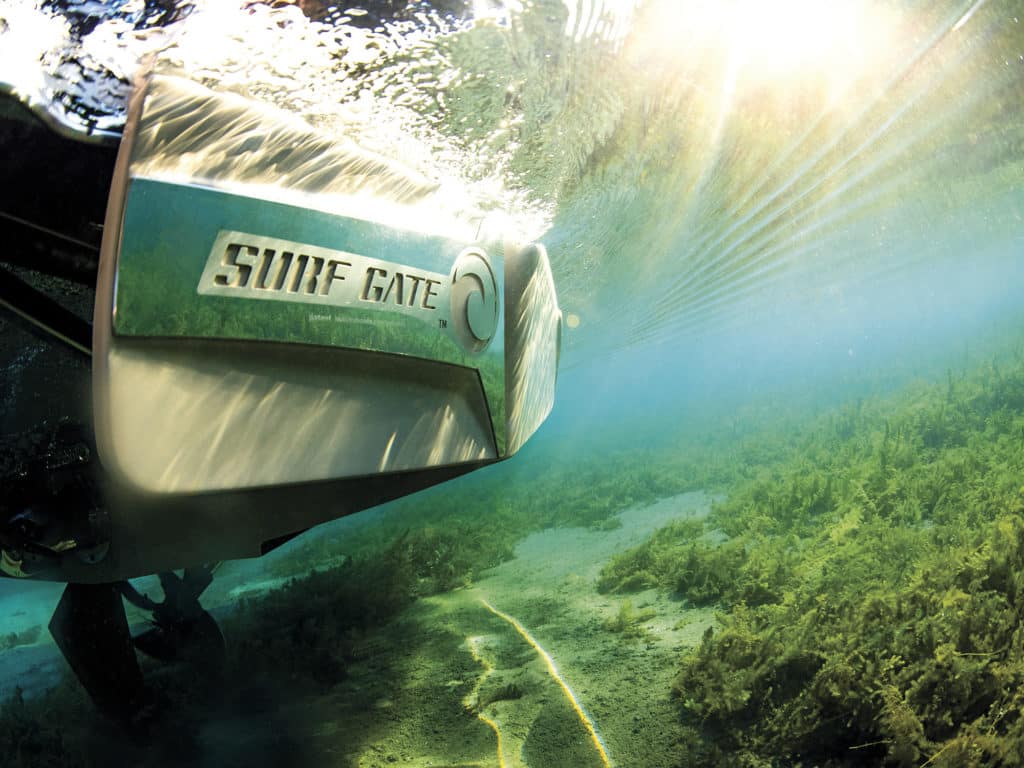
What Length?
Boat length is another consideration watersports boat buyers must wrestle with. How do you decide which boat size is right for you? A longer, heavier boat will probably create a bigger, more powerful wake than a smaller, lighter boat. However, it will require a larger engine, burn more fuel and cost more to buy than a smaller boat, all things being equal. In a perfect world, one devoid of home mortgages and college funds, we’d all choose a generally bigger boat.
But there are other considerations besides wake-related issues when buying a boat. Since a bigger boat will weigh more, you need to consider if you can tow it with your current vehicle or if it’s a size suitable for your current boat lift. If you store the boat in a garage, will the larger boat fit?
Conversely, does a smaller boat, even if easier to stow and tow and cheaper to own and run, provide the seating capacity for the gang of family and friends normally aboard for your sessions?
There’s no hard-pat answer to this question of length. What we can advise is that you think hard on all the ramifications boat size will have on your boat ownership experience before you buy.
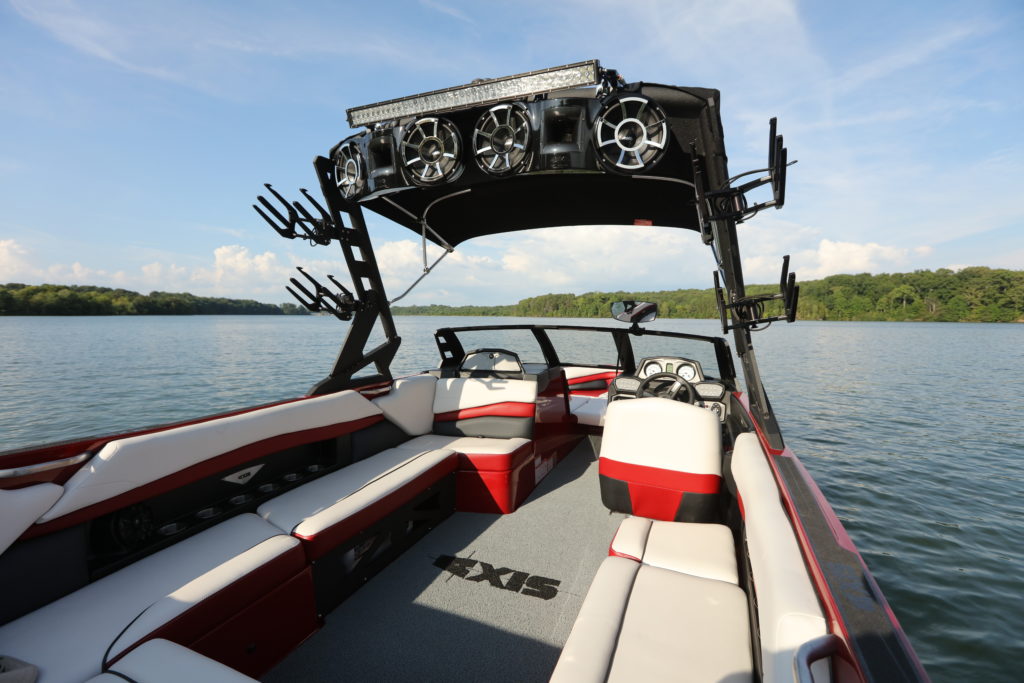
To Trade or Not to Trade
If you are a brand-new, first-time boat buyer, you are in the best position to buy a boat, not being saddled with an old boat that needs to be traded in or sold in order to buy the new one.
For those of you who currently own a boat, many dealers will take your boat on trade. However, a trade-in is not always the best deal for you financially — though trading in can be part of a good deal regardless of that fact. Here’s why, in a nutshell.
The book or trade-in values for boats are wholesale prices. They are not the prices the boat can be sold for. Dealers buy boats at wholesale and sell them at retail, so you will almost always get more money for your boat in a private sale. Second, when a dealer takes in a trade, they must make a profit on two boats: the new boat you are buying and the trade-in boat that must be sold before the dealer makes any money at all. Discounting is built into deals involving a trade-in.
On the plus side of trading in, the value of the trade-in boat is not counted for tax purposes in many states, so you may pay less sales tax with a trade-in. Also, when you trade in, the old boat is gone instantly. As anyone who has sold anything knows, you can wade through dozens of buyers over weeks or even months to sell your boat privately. With a trade-in, the deal gets done now.
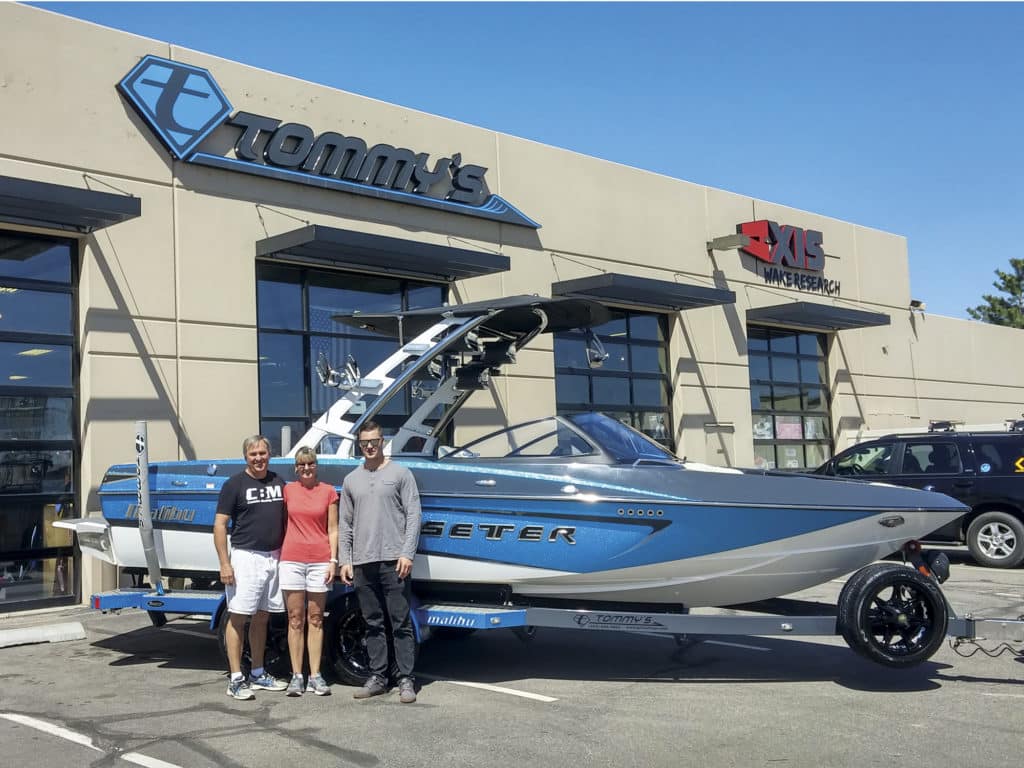
The Dealer
The boat dealer can make or break your boat-ownership experience. A dealer that is dedicated to service and with a good reputation among fellow wakeboarders on the lake is more likely to provide positive buying and ownership experiences for you than a dealer four counties over with no rep on your home waters. This can help you make the final cut from your short list of boats.
Don’t be shy. Ask the dealers you shop at for references. Knock on your neighbor-with-a-wakeboat’s door or walk over and introduce yourself to fellow boarders at the sandbar between sessions. Ask direct questions about how they were treated before, during and after the sale.
Whenever a buyer is conflicted between two great boats, I always suggest looking hard at the dealers for each as a way to determine which is the best boat for you. Shop for a dealer as hard as you shop for a boat.
Closing
Not closing the deal; I’m closing the article. Before I do, I want to leave you with one thought. Remember that there is no perfect boat, but there is probably a boat that is perfect for you, at any given time and place of your life.


